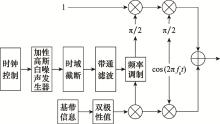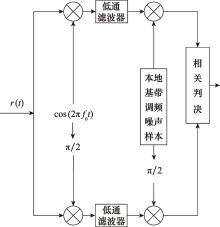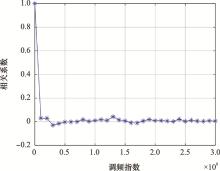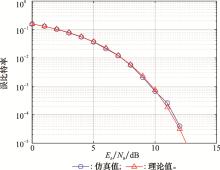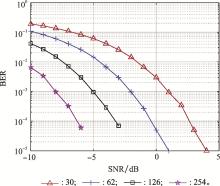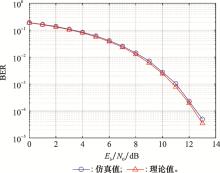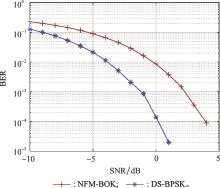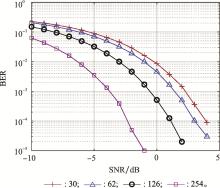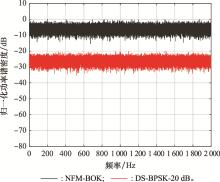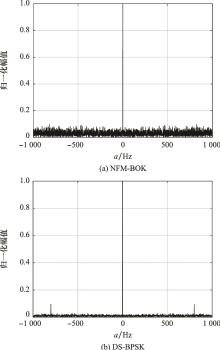| 1 |
张晓彤, 李书凯, 孙志国, 等. 时宽波形基联合捷变的LPD通信波形[J]. 系统工程与电子技术, 2020, 42 (12): 2884- 2891.
doi: 10.3969/j.issn.1001-506X.2020.12.26
|
|
ZHANG X T , LI S K , SUN Z G , et al. Time-wide waveform-based combined agility of LPD communication waveform[J]. Systems Engineering and Electronics, 2020, 42 (12): 2884- 2891.
doi: 10.3969/j.issn.1001-506X.2020.12.26
|
| 2 |
GUO S N , FU Y Q . A time-varying chaotic multitone communication method based on OFDM for low detection probability of eavesdroppers[J]. IEEE Access, 2021, 9, 107566- 107573.
doi: 10.1109/ACCESS.2021.3101553
|
| 3 |
ZHU Q , LI T , PAN J M , et al. The modified probability hypothesis density filter with adaptive birth intensity estimation for multi-target tracking in low detection probability[J]. IEEE Access, 2020, 8, 43690- 43710.
doi: 10.1109/ACCESS.2020.2977431
|
| 4 |
罗志勇, 谢映海. 一种用于隐蔽通信的低检测概率波形设计[J]. 信息通信, 2018, (8): 63- 64.
|
|
LUO Z Y , XIE Y H . A low detection probability waveform design for covert communication[J]. Information and Communication, 2018, (8): 63- 64.
|
| 5 |
石荣, 胡苏, 徐剑韬. 基于噪声调相干扰寄生扩频的隐蔽信息传输[J]. 火力与指挥控制, 2017, 42 (11): 60- 64.
|
|
SHI R , HU S , XU J T . Covert information transmission based on noise phase modulation interference parasitic spread spectrum[J]. Fire and Command and Control, 2017, 42 (11): 60- 64.
|
| 6 |
ARIGIT R , HARSHAL N B , RATNAJIT B . Multiuser PSK-chirp-BOK communication system under co-channel interference[J]. IEEE Trans.on Circuits and Systems Ⅱ: Express Briefs, 2020, 67 (3): 465- 469.
doi: 10.1109/TCSII.2019.2914056
|
| 7 |
SVENSSON-COELHO M , SILVA G T , SANTOS S S , et al. Lower detection probability of avian plasmodium in blood compared to other tissues[J]. Journal of Parasitology, 2016, 102 (5): 559- 561.
doi: 10.1645/16-8
|
| 8 |
JUNG M . An formula omitted-norm based color image deblu-rring model under mixed random-valued impulse and Gaussian noise[J]. Applied Mathematical Modelling, 2022, 102, 847- 866.
doi: 10.1016/j.apm.2021.10.023
|
| 9 |
GUO W Y , ZHI Y F . Nonlinear spline adaptive filtering against non-Gaussian noise[J]. Circuits, Systems, and Signal Processing, 2022, 41, 579- 596.
doi: 10.1007/s00034-021-01798-3
|
| 10 |
ZHOU K J , WANG H L , CAO P P , et al. Performance evaluation for chirp-BOK modulation scheme under alpha-stable noise[J]. IEEE Trans.on Fundamentals of Electronics, Communications and Computer Sciences, 2020, 103 (4): 723- 727.
|
| 11 |
张晓彤, 孙志国, 宁晓燕, 等. LPD通信波形设计方案及其性能分析[J]. 哈尔滨工程大学学报, 2018, 39 (8): 1409- 1414.
|
|
ZHANG X T , SUN Z G , NING X Y , et al. LPD communication waveform design scheme and its performance analysis[J]. Journal of Harbin Engineering University, 2018, 39 (8): 1409- 1414.
|
| 12 |
ZHANG H X , XU W X , ZHANG Y , et al. The blind demodulation scheme based on MP algorithm in Chirp-BOK UWB system[J]. The Journal of China Universities of Posts and Telecommunications, 2012, 19, 66- 70.
|
| 13 |
魏义飞. 基于能量统计的噪声调频干扰信号检测方法[J]. 电子科技, 2010, 23 (11): 61- 63.
|
|
WEI Y F . Noise FM interference signal detection method based on energy statistics[J]. Electronic Technology, 2010, 23 (11): 61- 63.
|
| 14 |
LEVY B C . Principles of signal detection and parameter estimation[M]. Boston: Springer, 2008.
|
| 15 |
POOR H V . An introduction to signal detection and estimation[M]. New York: Springer, 1994.
|
| 16 |
刘己斌, 王李军, 赵惠昌. 伪码体制引信的抗噪声调频干扰性能分析[J]. 电子与信息学报, 2004, 26 (12): 1925- 1932.
|
|
LIU J B , WANG L J , ZHAO H C . Analysis of anti noise FM interference performance of pseudo-random code fuze[J]. Journal of Electronics and Information, 2004, 26 (12): 1925- 1932.
|
| 17 |
MOHAMMAD T , DAVID H . Impact of antenna correlation on the physical layer security of cooperative relaying with OSTBC system[J]. IET Communications, 2020, 14 (19): 3472- 3479.
|
| 18 |
SUN Z G, LI S M, CHEN Z M, et al. The performance of Chirp-BOK modulation in the time fading channel[C]//Proc. of the International Conference on Intelligent and Interactive Systems and Applications, 2018: 862-869.
|
| 19 |
孙清清, 郑坤, 曹旭源, 等. 宽带噪声调频信号对脉冲压缩的干扰机理研究[J]. 雷达与对抗, 2016, 36 (2): 30- 34.
|
|
SUN Q Q , ZHENG K , CAO X Y , et al. Study on the interfe-rence mechanism of wideband noise FM signal to pulse compre-ssion[J]. Radar and Countermeasure, 2016, 36 (2): 30- 34.
|
| 20 |
GARDENER W . Measurement of spectral correlation[J]. IEEE Trans.on Acoustics, Speech, and Signal Processing, 1986, 34 (5): 1111- 1123.
|
